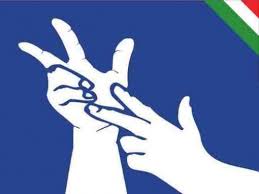 In Britain, British Sign Language, commonly referred to as BSL, is widely recognised, taught and understood by those in the deaf community, their friends, families and colleagues, and in the wider community. The language in its current form gained official recognition in March 2003 and as such has contributed to landmark changes being made under the Equality Act and the Disability Discrimination Act.
In Britain, British Sign Language, commonly referred to as BSL, is widely recognised, taught and understood by those in the deaf community, their friends, families and colleagues, and in the wider community. The language in its current form gained official recognition in March 2003 and as such has contributed to landmark changes being made under the Equality Act and the Disability Discrimination Act.
Clearly, these successes show the benefits that having a recognised sign language may offer. In Italy, however, there is some debate over whether an official sign language is needed at all, given that the cultural use of gestures, as opposed to a taught language, seems to be commonly utilised.
Much to the frustration of many in the Italian deaf community, the expressive way in which their peers use their hands naturally to indicate thoughts, feelings and actions is being given, they believe, more attention than it merits, to the detriment of the official Italian sign language: Lingua dei Segni Italiana (LIS).
LIS is used by thousands of hearing-impaired Italians and, much like BSL, is a rich and detailed language which has been celebrated for bridging the gap between the hearing and non-hearing worlds. Barbara Pennacchi, an experienced linguist and deaf research assistant, claims that while gestures can be an enhancement when it comes to common speech, they do not cover enough vocabulary or express such detailed meaning as LIS.
While Pennacchi is an advocate for LIS, there are many who would welcome a drop in status for LIS and a more relaxed gesture-based language adopted. In 2011, the Italian government started plans to downgrade LIS to a significantly more gesture-based language, referred to as Linguaggio Mimico Gestuale (LMG). A huge outcry from the Italian deaf community led to these plans being shelved, with no confirmation at present whether they will be scrapped altogether or revisited in the future.
Tiziani Gulli from Rome, a deaf advocate for the LIS language, has grave concerns regarding the lack of recognition for LIS. She explains that while twelve minority languages have been given official language status, LIS, which is used by thousands and growing in popularity, has been largely ignored by language authorities. Her concern is that downgrading or diminishing the importance of LIS will negatively affect the hearing-impaired community who rely upon LIS to enable them to communicate, and not only with their friends, families and colleagues; she feels that changes will reduce the access deaf people have to study, enjoy entertainment, seek the best medical care and participate fully in their community, in the same way as a hearing person might.
To summarise, the overwhelming response from the deaf community is that LIS needs not only to remain, but also to be officially recognised, and that additional resources need to be utilised in order to support the teaching and development of a language that for some represents the difference between the ability to lead an independent life, or not. The language of gestures and mimicry has its place; however, it appears unlikely that this will ever entirely replace LIS.
